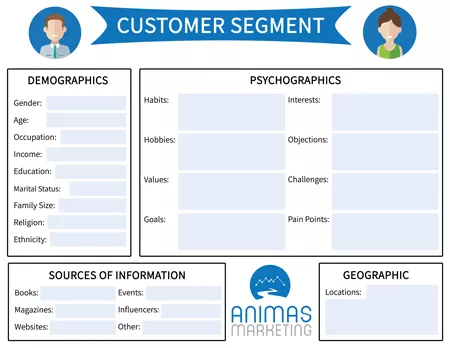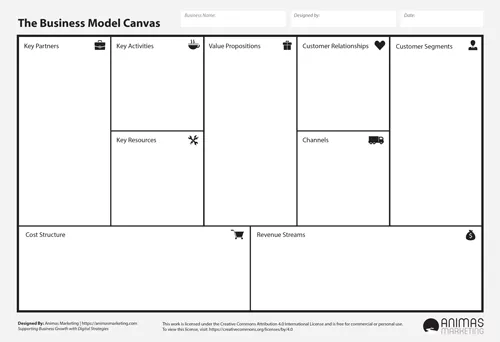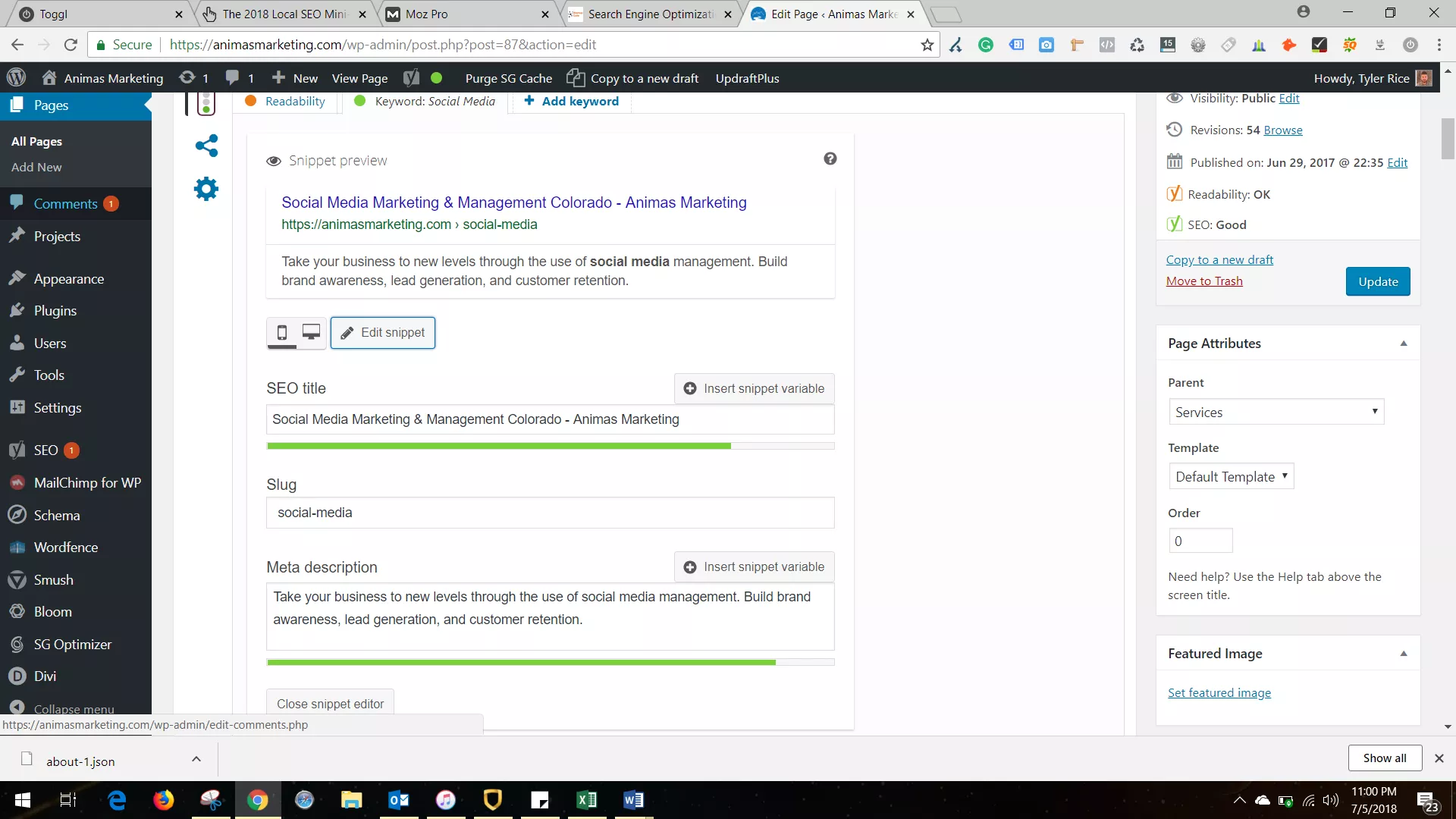2021 Simply Easy Local SEO Guide for Dummies
So, you want to work on local SEO without hiring an agency. You’ve thought about hiring a college intern or paying some money to outsource the work to India but what sort of challenges would you face with that?
Then you begin to think… why don’t I just learn how to use search engine optimization (SEO) myself and that way I know exactly what I am getting.
As a marketing agency that specializes in SEO, you would think that I might be here telling you that is not a viable solution and to hire us to do the work for you. But, that isn’t the case.
I say GO FOR IT.
2018 Local SEO Guide for Dummies
If you have the extra time to learn some of the easier techniques and methods that go into local search engine optimization, then why not do it yourself to save some money.
This isn’t to say that SEO is easy work or is a short process. Search engine optimization can take months or even years to show favorable results and can be anything from a simple business directory listing to advanced code and analytics to improve your business website.
But even then, you can take a search engine optimization course that you could breeze through in a week to get you understanding what is important.
Maybe you’re thinking to yourself, well, what if I can learn some of the best techniques and beat the competition without hiring an agency?
Well then superhero business owner, this simple, down-to-earth local SEO guide is for you.
Let’s break it down into 4 simple steps:
- Google My Business
- Search Engine Title & Meta Description
- Content Optimization
- Business Citations
Seems simple enough right? Good. Business growth never seemed so easy…
Google My Business
Ok, so Google My Business is really at the core of all other SEO efforts. If you are not listed on Google My Business, you may not show up on the search engine at all. You certainly won’t show up on the “snack pack”.
What is the “Snack Pack”?
It is the first box that appears above the normal results in a search with local intent.
Can you imagine how many more users would arrive at the first few results in the snack pack?
So, let’s get you on those results.
If you have not done so yet, create your Google My Business account.
By the end of the process, they will send you a confirmation code to the address you specified for your business.
Here is a short video to walk you through the process.
Search Engine Title & Meta Description
While this step is incredibly simple, it will require you to make some changes in the backend of your website regardless of if it is hosted on WordPress, Squarespace, Wix, or any other website building platform.
While the location of these SEO titles and descriptions can vary depending on the website platform, it can usually be found in the “settings” or “SEO” section of the builder.
For WordPress users, we like to recommend the popular Yoast SEO plug-in for this step. The plug-in provides a box below the content of each page in the backend of the site to easily update and modify each SEO title and meta description.
Simply put, there are two things to keep in mind when crafting SEO titles.
- User click-through-rate
- Relevant Keywords
The first is an obvious one. User click-through-rate should be the first goal for any SEO title or description as it is the first thing they see on a search engine before they visit the website.
Next, the main SEO value is the keywords that are used in the title. Keywords in the description no longer hold value but the title holds great ranking power with the right keywords.
In this example, we use our main keyword first, “Social Media Marketing”. This is followed by the local keyword, “Colorado” and then our brand name.
Having a solid mix of great ranking keywords and local keywords is essential to have a page that ranks well locally.
Overall, the title has great keywords and does not go over the top. When a user first sees this title and description, they know exactly what they are getting into when they click through to the page.
Always find the right balance between keywords for search engine “spiders” that crawl through your site and for users seeking information.
With a clear understanding of search engine titles and descriptions, let’s look at some simple methods to optimizing content on a webpage that you can do on your own.
Content Optimization
Content and search engine optimization go hand-in-hand. You can’t excel in one without the other.
But what if you do not have the time or the resources to be dishing out content consistently?
For example, if you are a small business owner that is simply trying to outrank the competition, do you need to have a blog with new content each week.
While it would certainly be beneficial for a business, man business owners simply do not have the time for this. So, let’s go over some easy techniques that you can use on the content that you already have on your website.
- Heading Tags
- Image Alt and Filenames
- Internal & External Links
Let’s begin with the use of header tags for search engine optimization.
-
Header Tags
There are 6 header tags used on a webpage. The HTML Tags may look like this.
These header tags hold more ranking value with keywords than normal paragraph text. Simply break up your content into relevant heading tags with your keywords included in them.
In the blog post from leading SEO expert Neil Patel, we see the title of the post, “6 Tips for Building Your Marketing Career”. This post might be targeted for the phrase, “Building Your Marketing Career” to bring in traffic for people searching that term.
Although, just like with SEO titles, keep the user in mind before plugging away at keywords. Find the balance.
Use the <h1> tag only once per page and try your best to split up the rest of the content in <h2> and <h3> tags.
-
Add Images
Include as many images as you can to go with the content. It certainly won’t hurt! With each image that is included, the HTML of the page has something called the <ALT> attribute with that image.
Historically, this was used for people with reading disabilities and for users with slow internet to show a small description of the image if it was not able to be seen.
While that still holds true, it also holds the main search engine ranking value for images. This is an excellent opportunity to plug in more keywords into a webpage. As with everything else, keep it relevant for the users.
-
Internal and External Links
Search engines like to see web pages that have a decent internal linking structure. Do not overdo it but be creative in finding new ways to add in other relevant topics and pages to other sections of the site.
For example, if your page is discussing hats for kittens, then maybe you can find an area in the content that links to the similar, “mittens for kittens”.
And who doesn’t love kittens?
For external links, search engines like to see content that links out to high-authority and relevant websites.
For example, if you were a painter in Macon, Georgia, then maybe you could find a way to incorporate a link to the Macon chamber of commerce. Or perhaps you could link to a local hardware store that might be relevant to the industry that you are in.
Overall, keep in mind the relevancy of each link and think to yourself, “Is Google going to see this as helpful and relevant on my page?”
This brings us to the fourth and final simple SEO technique for our simple guide.
Business Citations
This is equivalent to the massive yellow phone book you use to receive on your doorstep.
Now, enter the Yellow Pages for the internet. And there are hundreds to thousands of different directories out there.
You could enter each business citation manually.
This takes forever. I recommend just spending a small amount to have a service update many business directories for you.
There are many business directory services out there including Yelp, MOZ local, and many others. Research which directory service is best for your business and update the business information across the web.
Not only does this increase the overall online visibility having your website located in many different parts of the web, but a search engine will see this as authoritative for a local business residing in the area specified.
If search engine optimization (SEO) sparks your interest and you would like to learn more techniques involved, check out the free 2018 Local SEO e-Book below and continue your training padawan.
Download the Ultimate Guide for Local Business
Enjoy this free resource from us to help you learn the essential techniques to boost your rankings on search engines.
Is Your Business Being Found Online?

Free Digital Marketing Report ($150 Value)
Want to know how your business stacks up against the competition?
Learn More about SEO to Grow Your Small Business.

Free Ultimate SEO Guide for Local Business ($40 value)
Learn the easiest optimization techniques that most marketing agencies don’t want you to know about.

Need Marketing Help?













0 Comments